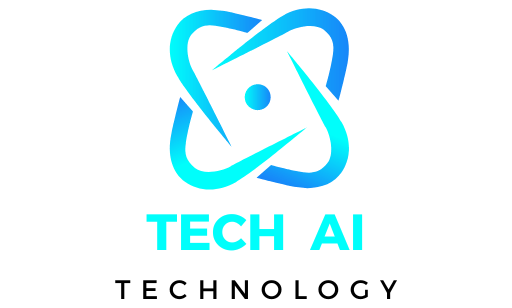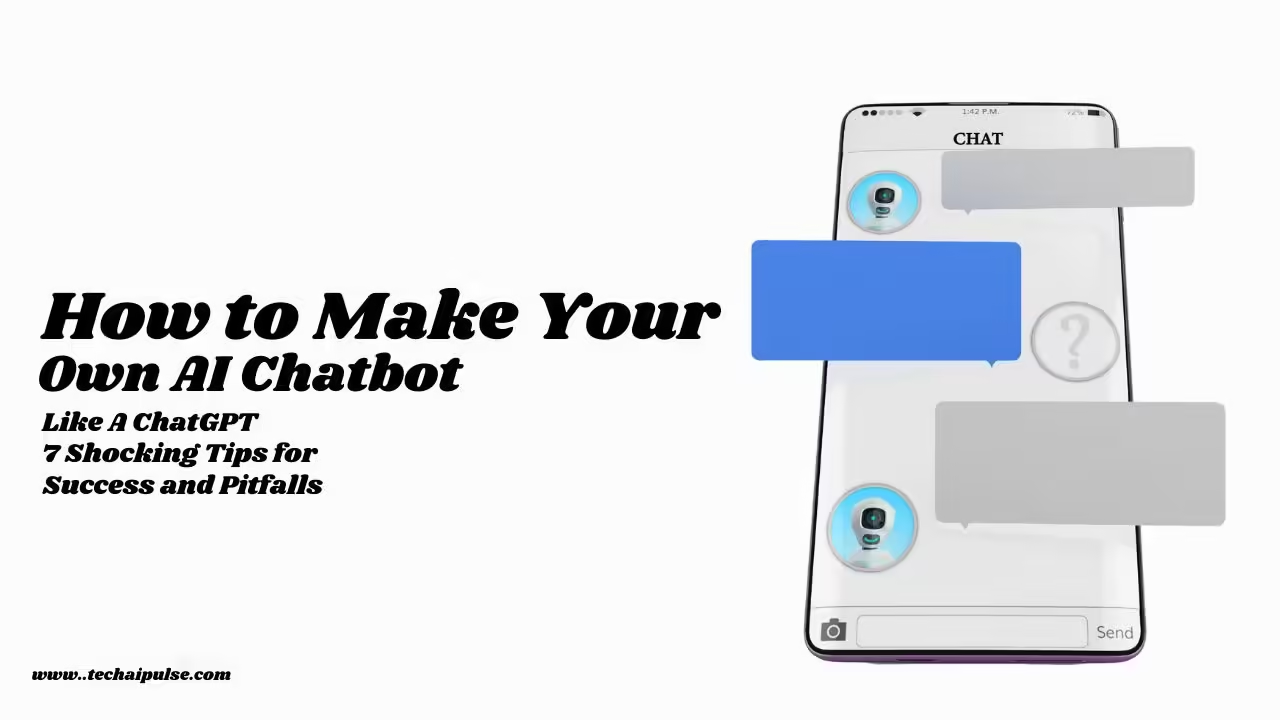Want to learn how to make your own AI chatbot in 2025? With the latest advancements in natural language processing (NLP) and AI chatbot frameworks, creating a smart, interactive virtual assistant is now easier than ever.
Whether you need a custom chatbot for your website, AI powered customer support, or a personal AI assistant, modern tools like ChatGPT API, Google Gemini, and open source LLMs can help. This guide will walk you through the essential steps from choosing the right AI model to integrating it with WhatsApp, websites, and apps so you can build a chatbot that’s both powerful and user friendly.
How to Make Your Own AI Chatbot (2025 Guide)
How to Make Your Own AI Chatbot in 2025 Quick Answer
Creating an AI chatbot in 2025 is easier than ever. First, choose an AI chatbot platform like OpenAI’s ChatGPT, Google Gemini, or Microsoft Copilot. Next, integrate natural language processing (NLP) models to enable smart conversation capabilities.
Use no code chatbot builders or AI frameworks like Rasa, Dialogflow, or LangChain for customization. Finally, train the chatbot with machine learning datasets, deploy it on websites or apps, and optimize it for better performance. Let’s explore the entire process in detail!
1. Understanding AI Chatbots and Their Functionality
AI chatbots are advanced virtual assistants powered by artificial intelligence and machine learning. These bots can process natural language inputs, understand user intent, and provide relevant responses.
With the rise of LLMs (Large Language Models) and cloud based AI services, chatbots have become essential for customer support, automation, and interactive applications. In 2025, modern AI chatbots use GPT-4 Turbo, Gemini Ultra, and Claude AI to provide real time, accurate responses with minimal latency.
2. Choosing the Right AI Chatbot Framework
Selecting the right chatbot development framework is crucial. There are two main approaches: no code platforms and custom AI development.
- No code chatbot builders: If you want a fast solution, platforms like ChatGPT API, BotPress, and Dialogflow allow you to create a chatbot without programming skills.
- Custom AI chatbot development: For more control, developers use Python, TensorFlow, PyTorch, or Rasa to build chatbots with advanced NLP capabilities. LangChain and LlamaIndex help integrate AI into various applications, making the chatbot more powerful.
3. Training Your AI Chatbot for Natural Conversations
A chatbot is only as good as the data it learns from. In 2025, AI training is focused on contextual understanding and real time learning. To improve chatbot accuracy:
- Use fine tuned AI models like GPT-4 Turbo, Mistral, or Falcon.
- Train on domain specific datasets for industries like healthcare, e-commerce, and finance.
- Implement reinforcement learning from human feedback (RLHF) to refine responses based on user interactions.
- Optimize chatbot memory to remember past conversations and deliver a personalized experience.
4. Integrating AI Chatbots with Websites and Apps
Once trained, your chatbot needs seamless integration with platforms like WordPress, Shopify, WhatsApp, and Slack. Key integration methods include:
- API based chatbots: Use OpenAI API, Google Vertex AI, or Microsoft Azure AI for smooth deployment.
- Chatbot plugins for websites: Add chat support using Tidio, Drift, or HubSpot Chatbot.
- Mobile app integration: Deploy AI powered bots in iOS and Android apps using React Native or Flutter.
- WhatsApp and Messenger bots: Use Twilio or Meta’s AI tools for business automation.
5. Enhancing Chatbot Performance with AI Tools
AI chatbots need continuous learning and updates to stay relevant. In 2025, the best practices for chatbot optimization include:
- Sentiment analysis: Improve user experience by detecting emotions and adjusting responses.
- Multimodal AI: Advanced chatbots now support text, voice, and image recognition for better interaction.
- Self learning AI models: Implement automated AI fine tuning to improve conversation quality over time.
- Voice enabled AI bots: Integrate speech to text AI for hands free communication.
6. Deploying and Monitoring Your AI Chatbot
After development, it’s crucial to monitor chatbot performance. Use analytics tools like Google AI Insights, IBM Watson Analytics, or Chatbase to track:
- User engagement and satisfaction rates
- Common queries and chatbot response effectiveness
- AI response time and error handling
Regular updates ensure that your AI chatbot adapts to evolving user needs and industry trends.
Understanding AI Chatbots in 2025
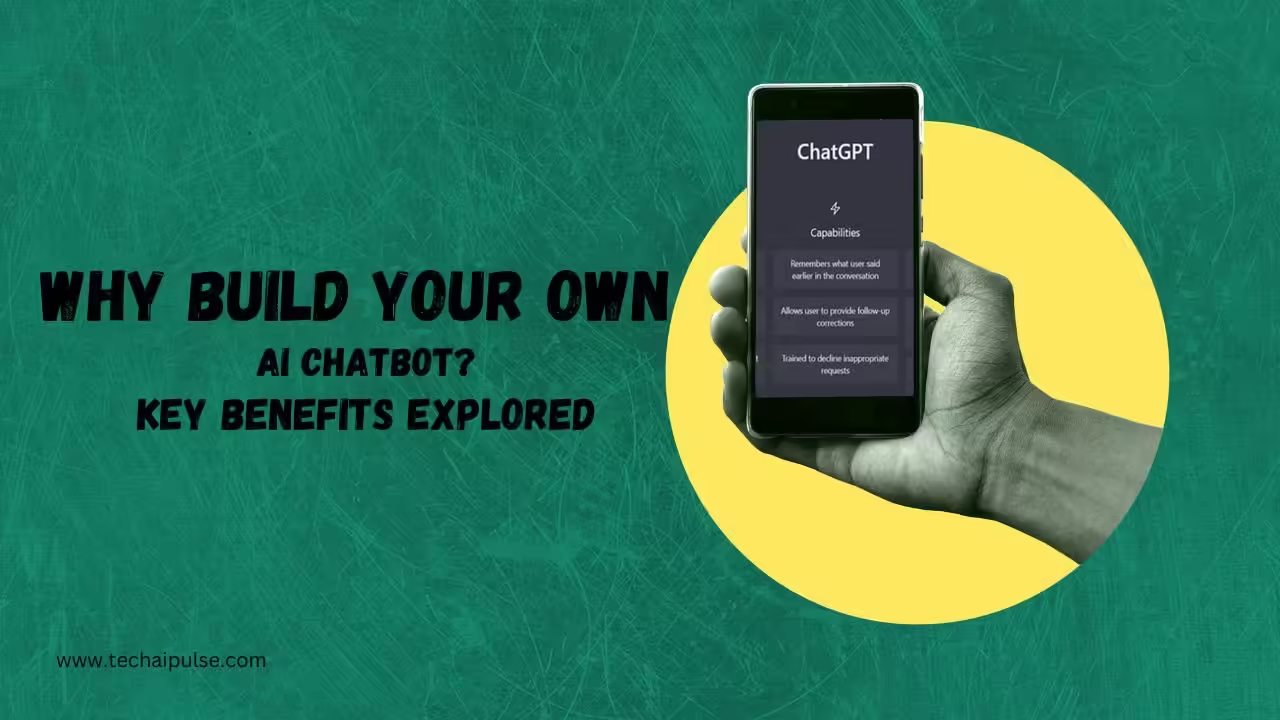
AI chatbots are transforming industries, offering smarter, faster, and more personalized interactions. In 2025, advancements in Natural Language Processing (NLP) and Machine Learning (ML) are making AI chatbots more intuitive, context aware, and efficient.
2.1 What is an AI Chatbot?
An AI chatbot is a software program that simulates human like conversations using NLP and ML. It understands text or voice commands and responds intelligently.
Difference Between Rule Based and AI Driven Chatbots
- Rule Based Chatbots: Follow predefined scripts and answer only specific queries. They lack learning capabilities.
- AI Driven Chatbots: Use machine learning algorithms to improve responses over time. They adapt to user behavior, making interactions more dynamic and human like.
How AI Chatbots Use NLP and ML
- Natural Language Processing (NLP): Helps chatbots understand, interpret, and generate human like responses.
- Machine Learning (ML): Enables chatbots to learn from past conversations and improve future interactions.
- Context Awareness: AI chatbots in 2025 use advanced sentiment analysis and context retention, making conversations feel natural and personalized.
2.2 Types of AI Chatbots in 2025
AI chatbots serve multiple industries, enhancing productivity, customer service, and automation.
Customer Support Chatbots
- Used in live chat, automated support, and FAQ handling.
- Provide instant responses, reducing customer wait time.
- AI driven bots can resolve complex queries and escalate issues to human agents when needed.
E-Commerce Chatbots
- Recommend personalized products based on browsing history.
- Assist with order tracking, refunds, and payment issues.
- Increase conversion rates by offering AI powered shopping assistants.
Healthcare AI Assistants
- Help users with symptom checking and preliminary diagnosis.
- Schedule doctor appointments and medication reminders.
- Provide mental health support using conversational AI.
Personal AI Assistants
- Include AI companions, productivity bots, and digital organizers.
- Assist with task automation, calendar management, and reminders.
- Some AI assistants offer emotional intelligence, creating engaging and meaningful interactions.
Voice Enabled AI Bots
- Examples include Google Assistant, Siri, and Alexa like AI.
- Use voice recognition and natural language processing to respond to commands.
- Integrated with smart home devices, cars, and IoT ecosystems
Choosing the Right AI Chatbot Framework
AI chatbots are transforming customer support, automation, and business operations. Selecting the right AI chatbot framework depends on your needs, technical skills, and scalability requirements. This guide covers both no code solutions and custom development approaches to help you make the best choice.
3.1 No Code & Low Code AI Chatbot Builders
No code and low code AI chatbot platforms allow businesses to deploy chatbots quickly without programming expertise. These platforms use drag and drop builders, pre built integrations, and AI driven automation to streamline chatbot creation.
Best No Code AI Chatbot Platforms:
- Dialogflow: Google powered AI chatbot builder with NLP capabilities.
- BotPress: Open source chatbot platform with flexible customization.
- Tidio: AI driven chatbot for customer support and e-commerce automation.
- ManyChat: Best for Facebook Messenger and WhatsApp automation.
- ChatGPT API: Integrates OpenAI’s chatbot capabilities into apps and websites.
Pros and Cons of Using No Code Chatbot Builders:
Pros:
Quick deployment without coding skills.
Pre trained AI models enhance chatbot accuracy.
Cost effective for small businesses and startups.
Seamless integration with CRM, social media, and customer support tools.
Cons:
Limited customization compared to coding based solutions.
Scalability issues for handling complex interactions.
Dependency on platform restrictions and pricing models.
3.2 Custom AI Chatbot Development
For businesses needing full control over chatbot logic, custom AI chatbot development offers greater flexibility, scalability, and intelligence.
Best AI Chatbot Frameworks for Custom Development:
- Rasa: Open source NLP chatbot framework with deep learning capabilities.
- LangChain: Ideal for integrating LLMs (Large Language Models) into applications.
- LlamaIndex: Best for document based AI assistants and knowledge retrieval.
- OpenAI API: Powers chatbots using GPT-4 Turbo for human like conversations.
Choosing the Right Tech Stack for AI Chatbots:
- Python: Best for NLP and AI chatbot development with extensive libraries.
- TensorFlow & PyTorch: Ideal for deep learning based AI chatbots.
- FastAPI & Flask: Useful for building scalable chatbot APIs.
Leveraging Advanced AI Models for Smarter Chatbots:
- GPT-4 Turbo: OpenAI’s latest model for conversational AI and automation.
- Gemini Ultra: Google’s AI model optimized for contextual understanding.
- Claude AI: Anthropic’s AI chatbot designed for ethical and safe interactions.
Pros and Cons of Custom AI Chatbot Development:
Pros:
High customization and control over chatbot behavior.
Better scalability for handling complex tasks.
Advanced AI capabilities for personalized interactions.
Cons:
-
Requires AI and coding expertise
-
Higher development and maintenance costs.
Longer deployment time compared to pre built chatbot solutions.
Designing Your AI Chatbot’s Conversation Flow
Creating a seamless AI chatbot requires a structured conversation flow. A well designed chatbot improves user interaction, enhances engagement, and delivers accurate responses. Here’s how to build an AI chatbot with intent recognition, interactive scripts, LLM powered responses, and multimodal AI support.
Understanding Intent Recognition and Context Awareness
Intent recognition helps chatbots understand user queries. AI models analyze input text, detect intent, and respond accurately. Context awareness ensures continuity in conversations.
- Natural Language Processing (NLP) improves intent detection.
- Machine learning algorithms analyze user inputs for better accuracy.
- Context tracking maintains relevant conversations across multiple exchanges.
- Predefined intents and training data enhance chatbot understanding.
Advanced chatbots use deep learning to refine accuracy. They adapt responses based on conversation history and sentiment analysis.
Creating an Interactive Conversation Script
A conversation script guides chatbot interactions. Well structured scripts improve user experience and ensure logical responses.
- Decision trees help map out possible conversation paths.
- Predefined responses ensure consistency in replies.
- Personalized messaging makes chatbots feel more human like.
- Adaptive learning models refine responses based on user behavior.
Chatbots should handle multiple user intents, switching seamlessly between topics without breaking conversation flow.
Using LLMs to Enhance Chatbot Responses
Large Language Models (LLMs) improve chatbot responses with natural, contextually accurate answers.
- Transformer based models like GPT enhance chatbot interactions.
- Pretrained models generate human like responses instantly.
- Fine tuning LLMs ensures industry specific chatbot responses.
- Semantic search improves query understanding for better accuracy.
By integrating LLMs, chatbots can answer complex questions, summarize text, and generate dynamic responses.
Adding Multimodal AI Support (Text, Voice, Images)
Multimodal AI enhances chatbot interactions by supporting various communication methods.
- Voice recognition allows spoken queries and responses.
- Image processing enables chatbots to interpret visual data.
- Multilingual capabilities improve global accessibility.
- Hybrid AI models combine text, voice, and image understanding.
With multimodal AI, chatbots can recognize voice commands, process images, and provide rich user experiences across different platforms.
Training Your AI Chatbot for Natural Conversations
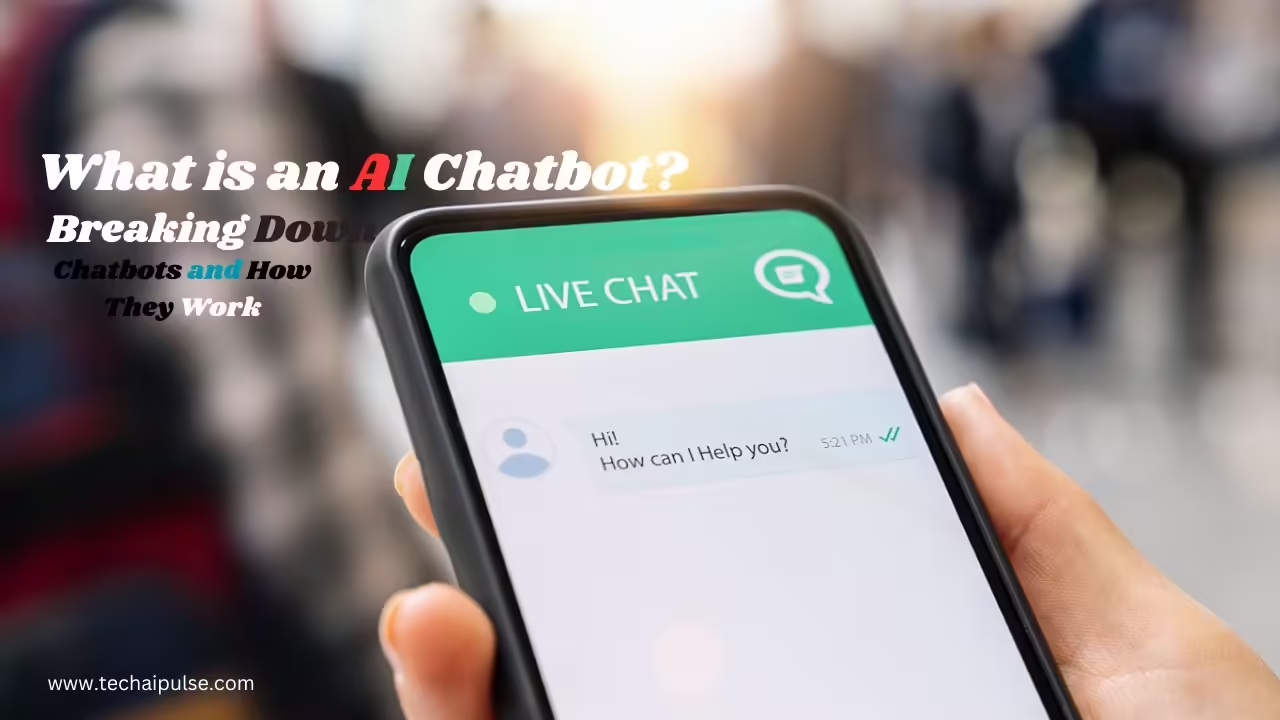
AI chatbots are evolving rapidly in 2025, becoming more human like with advanced machine learning techniques. Training an AI chatbot requires high quality data, sentiment analysis, and reinforcement learning to improve responses. Here’s how to make your chatbot more intelligent and conversational.
5.1 Gathering and Preparing Data
Using Real World Datasets for Chatbot Training
AI chatbots learn best from real world conversations. Using high quality datasets, such as customer interactions and support logs, helps improve response accuracy. Large language models (LLMs) like GPT-4 Turbo are trained on diverse dialogues to create natural conversations.
Fine Tuning Pre Trained AI Models for Better Results
Pre trained AI models provide a strong foundation for chatbot training. Fine tuning them with domain specific data ensures accurate and context aware responses. Businesses use fine tuning to train AI for customer service, healthcare, and e-commerce.
Implementing Reinforcement Learning from Human Feedback (RLHF)
RLHF refines chatbot behavior by training it with user feedback. AI models analyze human responses and adjust their replies based on preferences. This technique improves chatbot accuracy, reducing irrelevant or robotic answers.
5.2 Enhancing Chatbot Intelligence
Implementing Sentiment Analysis for Emotional Responses
Sentiment analysis helps chatbots detect emotions like joy, frustration, or sadness. By analyzing user sentiment, AI can adjust tone and style, making interactions feel natural. AI driven customer service chatbots use this to provide empathetic support.
Optimizing Chatbot Memory for Contextual Understanding
AI chatbots need memory to remember past interactions. Context aware AI uses long term memory to recall user preferences and previous chats. This makes conversations feel continuous, improving the user experience.
Handling Multi Turn Conversations for a More Human Like Experience
Multi turn conversation handling allows AI to understand follow up questions and maintain dialogue flow. Advanced NLP techniques, like transformer based architectures, enable AI to track context over multiple interactions. This creates seamless, human like discussions.
Deploying Your AI Chatbot on Multiple Platforms
AI chatbots enhance user engagement, automate customer support, and streamline business operations. Deploying them across multiple platforms ensures seamless communication with users. Here’s how to integrate AI chatbots effectively in 2025.
6.1 Website and Mobile App Integration
How to Add a Chatbot to WordPress, Shopify, and Mobile Apps
Integrating an AI chatbot into your website or app boosts user experience and sales.
- WordPress: Use chatbot plugins like WP Chatbot, Tidio, or ChatBot.com for seamless integration.
- Shopify: Install apps like Gorgias, Tidio, or Chatfuel to automate customer interactions.
- Mobile Apps: Utilize SDKs from OpenAI, Google Dialogflow, or Microsoft Bot Framework for iOS and Android.
Best Chatbot Plugins for Live Chat Support
Businesses rely on AI powered chatbot plugins to provide real time support. Some top chatbot plugins include:
- Tidio: AI powered automation with multi channel support.
- LiveChat: Fast integration with CRM and e-commerce platforms.
- ChatBot.com: Customizable AI driven chatbot for automated responses.
6.2 Social Media and Messaging Integration
Connecting AI Chatbots with WhatsApp, Messenger, Instagram, Slack, and Telegram
AI chatbots on social platforms enhance engagement and automate responses:
- WhatsApp & Messenger: Use Meta AI or Twilio for chatbot automation.
- Instagram: Leverage Instagram Direct API to handle customer queries efficiently.
- Slack & Telegram: Deploy AI bots using BotFather (Telegram) or Slack’s App Directory.
Using Twilio and Meta AI for WhatsApp Chatbot Automation
Twilio and Meta AI streamline WhatsApp chatbot development:
- Twilio provides APIs for messaging automation and CRM integration.
- Meta AI enhances chatbot intelligence, allowing smart responses and personalization.
6.3 API Based Deployment
Using OpenAI API, Google Vertex AI, and Microsoft Azure AI for Chatbot Integration
Deploying AI chatbots with APIs enhances flexibility and customization:
- OpenAI API: Power AI driven responses using GPT-4 and GPT-5.
- Google Vertex AI: Create scalable, machine learning powered chatbots.
- Microsoft Azure AI: Leverage Azure Bot Services for enterprise grade AI chatbots.
How to Connect Chatbots with Third Party Apps and CRMs
Integrating AI chatbots with third party apps ensures better automation:
- Zapier: Connect AI chatbots with thousands of apps like Slack, Gmail, and HubSpot.
- Salesforce & HubSpot: Use AI chatbots for customer data management and automated responses.
- Zendesk & Freshdesk: Integrate AI bots for ticket automation and customer service.
Optimizing and Scaling Your AI Chatbot
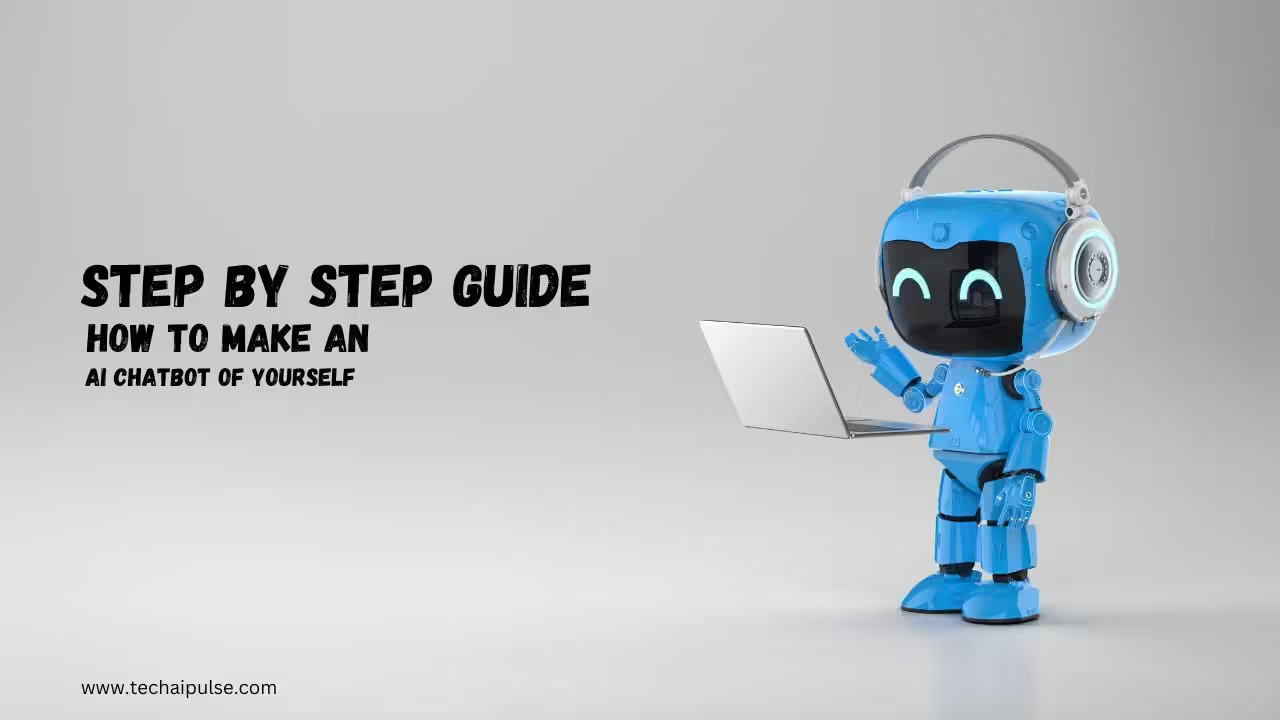
AI chatbots are revolutionizing customer service, sales, and automation. To maximize efficiency, businesses must focus on performance monitoring, response accuracy, and ethical AI development.
7.1 AI Chatbot Performance Monitoring
Monitoring AI chatbot performance ensures accuracy and engagement. Businesses use advanced analytics tools like Google AI Insights, Chatbase, and IBM Watson Analytics to track user interactions.
Key performance indicators (KPIs) include:
- Chatbot engagement rate: Measures user interaction levels.
- Response accuracy: Evaluates how well the chatbot answers queries.
- User retention: Tracks how often users return after first contact.
Using real time analytics, businesses can optimize chatbot workflows, detect response delays, and enhance natural language understanding (NLU).
7.2 Improving AI Chatbot Responses
Real Time Learning for Chatbot Enhancement
Modern AI chatbots use machine learning (ML) to refine responses dynamically. They analyze past interactions, adjust reply accuracy, and predict user intent. Natural language processing (NLP) algorithms help improve conversational flow.
Updating the Chatbot Knowledge Base
Chatbots must continuously learn from new data. Updating knowledge bases ensures they provide relevant, context aware answers. Automating updates helps chatbots stay accurate and meet evolving user expectations.
Addressing AI Bias and Ethical Challenges
AI bias can affect chatbot fairness and accuracy. Developers implement bias detection models and ethical AI frameworks to prevent misinformation. Regular audits and diverse training data enhance chatbot reliability and inclusivity.
Future Trends in AI Chatbots (2025 & Beyond)
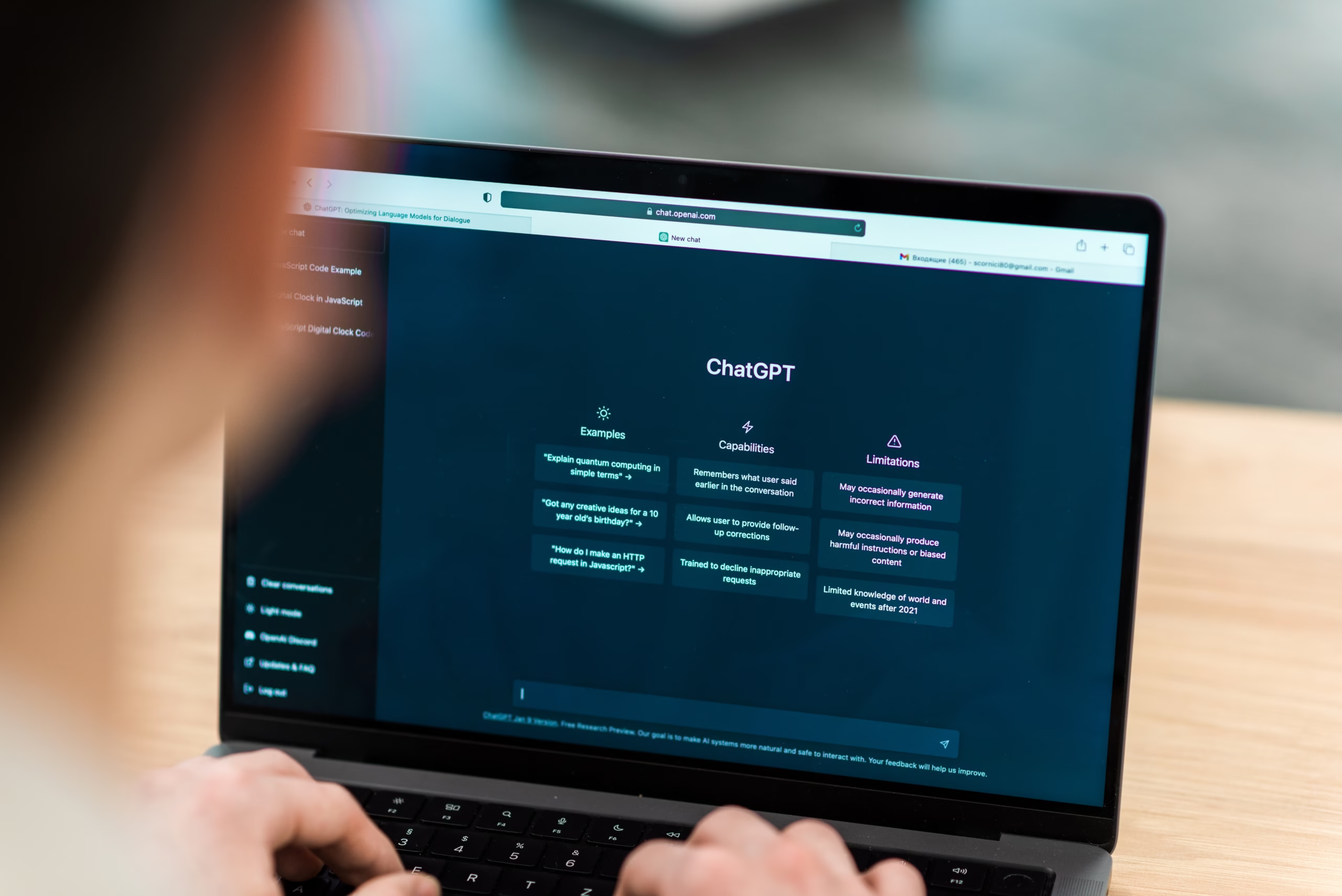
AI chatbots are rapidly evolving, transforming how businesses and users interact. The future of AI chatbots in 2025 and beyond will focus on hyper personalization, multimodal AI, self learning models, and fully automated AI driven interactions. Here are the key trends shaping AI chatbot technology:
1. Hyper Personalization: AI Adapting to User Behavior
AI chatbots will provide personalized experiences based on user preferences, browsing history, and past interactions. They will analyze real time data to tailor responses, predict user needs, and improve engagement.
Expect AI powered chatbots to offer product recommendations, dynamic customer support, and individualized conversations with advanced natural language processing (NLP) models.
2. Multimodal AI Bots: Text, Voice, and Visual Interaction
Next generation chatbots will go beyond text based communication. Multimodal AI chatbots will integrate voice recognition, image processing, and even video based interactions.
This will enable a seamless, human like experience where users can communicate through speech, gestures, and visual inputs. Voice AI, combined with computer vision, will enhance accessibility and usability across industries.
3. Self Learning AI Models: Bots That Evolve Without Manual Training
Future AI chatbots will leverage self learning algorithms, continuously improving their responses without human intervention. These AI driven bots will use reinforcement learning and unsupervised machine learning to adapt in real time.
This advancement will reduce the need for frequent updates and manual retraining, making AI assistants more efficient and autonomous.
4. AI Agents for Businesses: Fully Automated Customer Interactions
Businesses will adopt AI driven agents to handle complex customer interactions without human intervention. These AI chatbots will manage sales, support, and marketing tasks, offering real time solutions.
Integration with customer relationship management (CRM) systems and automation tools will streamline business operations, reduce costs, and enhance user satisfaction.
FAQs:
Q1. What is the easiest way to create an AI chatbot in 2025?
The easiest way to build an AI chatbot is by using no code platforms like Dialogflow, ManyChat, or BotPress, which provide ready made templates and AI models. For advanced customization, developers can use OpenAI API, Rasa, or LangChain.
Q2. Do I need coding skills to build an AI chatbot?
No, you don’t need coding skills if you use drag and drop chatbot builders like Tidio or Chatfuel. However, if you want to create a custom AI chatbot, learning Python, JavaScript, or using APIs will help you build a more powerful bot.
Q3. How can I train my AI chatbot to improve its responses?
To train your chatbot effectively:
- Use high quality datasets with real world conversations.
- Fine tune it with reinforcement learning and human feedback.
- Implement NLP models like GPT-4 Turbo, Gemini Ultra, or Claude AI.
Q4. Which AI models are best for chatbots in 2025?
The best AI models for chatbots in 2025 include:
- GPT-4 Turbo (by OpenAI): Best for general conversations.
- Gemini Ultra (by Google): Advanced AI understanding.
- Claude 3 (by Anthropic): Ethical and safety focused AI.
- Meta AI (Llama 3): Efficient and open source AI model.
Q5. How can I integrate my AI chatbot with my website?
You can integrate your chatbot on your website or mobile app using:
- WordPress chatbot plugins (Tidio, WPBot).
- JavaScript based chatbot embedding.
- APIs like OpenAI, Google Vertex AI, and Twilio for real time interaction.
Q6. Can I make a voice enabled AI chatbot?
Yes! You can build a voice enabled AI chatbot using:
- Google Speech to Text API for voice recognition.
- Amazon Polly for text speech conversion.
- Whisper API (by OpenAI) for real time speech processing.
Q7. How do AI chatbots handle multiple languages?
AI chatbots use multi language NLP models like Google Translate API, DeepL, or GPT-4’s multilingual training. Advanced chatbots can auto detect user language and respond accordingly.
Q8. How much does it cost to create an AI chatbot?
The cost depends on the platform:
- No Code Chatbot Builders: $0 to $100/month.
- Custom AI Chatbots (APIs & Frameworks): $500 to $5,000+ (development + hosting).
- Enterprise AI Chatbots: $10,000+ (for large scale business solutions).
Q9. How can I make my chatbot smarter over time?
To improve chatbot intelligence:
- Use real time learning algorithms.
- Implement AI fine tuning with user feedback.
- Regularly update training data to reflect user preferences.
Q10. What are the biggest chatbot trends in 2025?
Some top chatbot trends for 2025 include:
- AI powered voice assistants with real time speech recognition.
- Multimodal AI bots that understand text, voice, and images.
- Hyper personalized AI chatbots that adapt based on user behavior.
- Self learning AI chatbots that improve without manual training.
Conclusion:
Building your own AI chatbot in 2025 is easier than ever, thanks to advanced AI models and no code platforms. Whether you’re a beginner using chatbot builders or a developer customizing AI with Python and APIs, you can create a smart, responsive bot for any purpose.
Focus on natural language processing (NLP), user engagement, and continuous training to improve its accuracy over time. With the right tools and strategies, your AI chatbot can enhance customer support, automate tasks, and provide seamless interactions. Start today and bring your AI chatbot idea to life!
